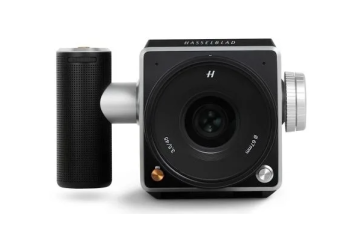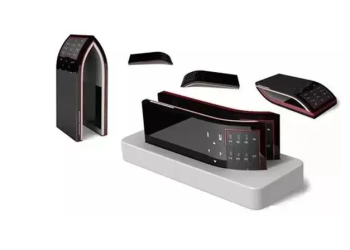Introduction
In an increasingly connected world, smart home technology has emerged as a revolutionary way to enhance convenience, comfort, and security within the home. From voice-controlled virtual assistants to automated lighting and security systems, smart home technology offers a myriad of benefits for homeowners looking to create a more efficient and enjoyable living environment.
Understanding Smart Home Technology
Definition and Components: Smart home technology refers to a network of interconnected devices and systems that can be controlled and monitored remotely using smartphones, tablets, or voice commands. These devices, which often feature built-in sensors and wireless connectivity, communicate with each other and with central hubs to automate various aspects of home management.
Benefits of Smart Home Systems: Smart home systems offer a wide range of benefits, including increased convenience, energy efficiency, and home security. By automating routine tasks and providing remote access to home controls, smart home technology empowers homeowners to save time, energy, and money while enhancing comfort and peace of mind.
Essential Smart Home Devices
Smart Speakers and Virtual Assistants: Smart speakers, powered by virtual assistants like Amazon Alexa, Google Assistant, or Apple Siri, serve as the central hub of many smart home systems. These devices enable hands-free voice control of other smart home devices, as well as access to a wide range of information and entertainment services.
Smart Lighting Systems: Smart lighting systems allow users to control the brightness, color, and timing of their lights using smartphone apps or voice commands. By scheduling lights to turn on or off automatically or adjusting lighting levels based on time of day or occupancy, smart lighting systems enhance convenience and energy efficiency.
Smart Thermostats: Smart thermostats enable users to remotely control and monitor their home heating and cooling systems, optimizing comfort and energy usage. These devices can learn user preferences over time, adjust temperature settings automatically, and provide insights into energy consumption and cost savings.
Smart Security Cameras and Doorbells: Smart security cameras and doorbells provide homeowners with peace of mind by offering real-time monitoring and surveillance of their property. These devices feature motion detection, night vision, and two-way audio communication, allowing users to deter intruders and monitor activity from anywhere.
Choosing the Right Smart Home Devices
Compatibility and Integration: When selecting smart home devices, it’s essential to ensure compatibility and integration with existing systems and platforms. Choose devices that support open standards like Wi-Fi, Zigbee, or Z-Wave and are compatible with popular smart home ecosystems like Amazon Alexa or Google Home for seamless integration and control.
Features and Functionality: Consider the features and functionality offered by different smart home devices to meet your specific needs and preferences. Whether you prioritize voice control, energy efficiency, or home security, choose devices that offer the right combination of features to enhance your smart home experience.
Budget Considerations: Set a budget and prioritize smart home devices based on their cost-effectiveness and value proposition. While some devices may come with premium features and price tags, others offer basic functionality at a more affordable price point. Strike a balance between cost and performance to maximize the return on your investment.
Setting Up Your Smart Home
Planning and Designing Your Smart Home Ecosystem: Before diving into smart home technology, take the time to plan and design your smart home ecosystem. Identify areas of your home where automation can make the most significant impact and prioritize devices accordingly. Consider factors like room layout, device placement, and network connectivity when designing your smart home setup.
Installation and Configuration of Devices: Follow manufacturer instructions and best practices when installing and configuring smart home devices. Ensure proper placement, secure mounting, and reliable power sources for each device, and test functionality before finalizing installation. Use mobile apps or setup wizards to guide you through the configuration process and connect devices to your home network.
Connecting Devices to Your Home Network: Connect smart home devices to your home network using Wi-Fi or Ethernet connections for reliable communication and control. Ensure your network router is up to date and properly configured to support the bandwidth and security requirements of your smart home ecosystem.
Managing Your Smart Home System
Using Mobile Apps and Voice Commands: Take advantage of mobile apps and voice commands to control and manage your smart home system from anywhere. Install manufacturer-provided apps on your smartphone or tablet to access device controls, settings, and notifications remotely. Use voice commands with smart speakers or virtual assistants to control devices hands-free and perform routine tasks effortlessly.
Automating Routine Tasks and Schedules: Automate routine tasks and schedules using smart home automation features and routines. Create custom schedules to turn lights on or off at specific times, adjust thermostat settings based on occupancy or temperature, or arm security systems when you leave home. Set up triggers and actions to automate workflows and streamline home management tasks.
Monitoring and Troubleshooting Devices: Monitor the performance and status of your smart home devices regularly to ensure optimal functionality and reliability. Use mobile apps or web interfaces to check device health, review activity logs, and troubleshoot connectivity issues. Address any issues or malfunctions promptly to prevent disruptions to your smart home system.
Enhancing Security and Privacy
Implementing Strong Passwords and Encryption: Protect your smart home system from unauthorized access and cyber threats by implementing strong passwords and encryption protocols. Use unique, complex passwords for each device and change them regularly to prevent unauthorized access. Enable encryption and two-factor authentication wherever possible to enhance security and privacy.
Keeping Firmware and Software Updated: Stay vigilant against security vulnerabilities and exploits by keeping firmware and software updated on all smart home devices. Regularly check for updates and patches from manufacturers and install them promptly to patch known vulnerabilities and improve device performance and security.
Reviewing Privacy Settings and Permissions: Review privacy settings and permissions for smart home devices to control data collection and sharing practices. Disable unnecessary features and permissions that may compromise privacy or expose sensitive information. Stay informed about privacy policies and terms of service for smart home platforms and services and adjust settings as needed to protect your privacy.
Expanding Your Smart Home
Exploring Additional Smart Home Devices and Accessories: Continue to explore and experiment with additional smart home devices and accessories to enhance your smart home experience. From smart appliances and entertainment systems to environmental sensors and health monitors, there’s no shortage of innovative products to complement your existing smart home ecosystem.
Integrating Smart Home Systems with Other Technologies: Integrate your smart home systems with other technologies and platforms to create a seamless and interconnected living environment. Connect smart home devices with home automation hubs, energy management systems, or voice-controlled assistants to expand functionality and interoperability.
Future Trends in Smart Home Technology
Artificial Intelligence and Machine Learning: Expect to see continued advancements in artificial intelligence (AI) and machine learning (ML) technologies within the smart home space. AI-powered assistants and algorithms will become increasingly adept at understanding user preferences, predicting behavior, and optimizing home automation routines for maximum efficiency and comfort.
Internet of Things (IoT) Integration: The Internet of Things (IoT) will play a central role in the evolution of smart home technology, enabling seamless connectivity and interoperability between devices and systems. As more devices become IoT-enabled, expect to see greater integration and convergence across different smart home platforms and ecosystems.
Sustainable and Energy-Efficient Solutions: Look for the development of sustainable and energy-efficient solutions within the smart home market, driven by growing concerns about environmental sustainability and energy conservation. From smart energy management systems to eco-friendly materials and designs, expect to see innovations that prioritize sustainability and reduce the ecological footprint of smart home technology.
Conclusion
Transforming your home into a smart haven with smart home technology offers countless benefits, from increased convenience and comfort to enhanced security and energy efficiency. By understanding the basics of smart home technology, choosing the right devices, and implementing best practices for setup and management, you can create a personalized smart home ecosystem that meets your needs and preferences.

FAQs After The Conclusion
1. What are some common smart home security risks and how can I mitigate them? 2. Can I install smart home devices myself, or do I need professional installation? 3. How can I ensure compatibility between different smart home devices and platforms? 4. Are there any privacy concerns associated with using smart home technology? 5. What are some examples of advanced smart home automation features and routines? 6. How can I troubleshoot common issues with smart home devices? 7. Are there any government regulations or standards for smart home technology? 8. What should I consider before upgrading or expanding my existing smart home system?




![Top 10 Smart Home Devices of [Current Year]: Reviews and Comparisons](https://digital-electron.com/wp-content/uploads/2024/02/image-42-350x250.png)








